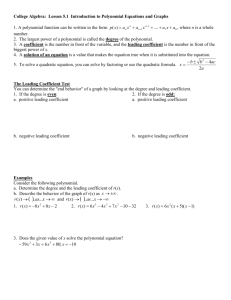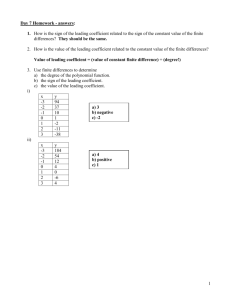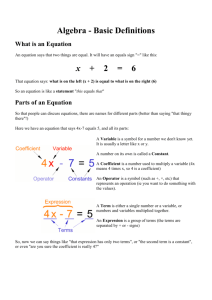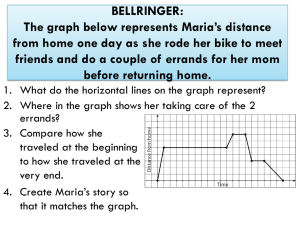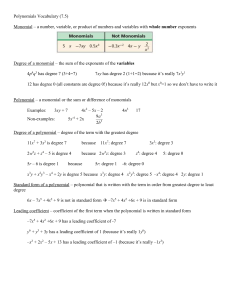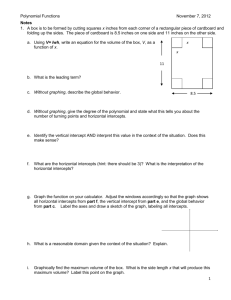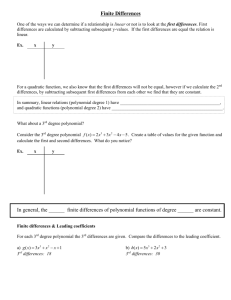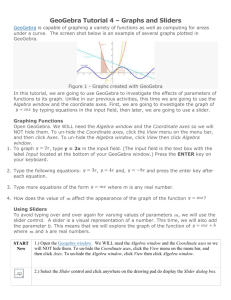Activity 3.1.2 Polynomial GeoGebra Investigation – End Behavior
advertisement
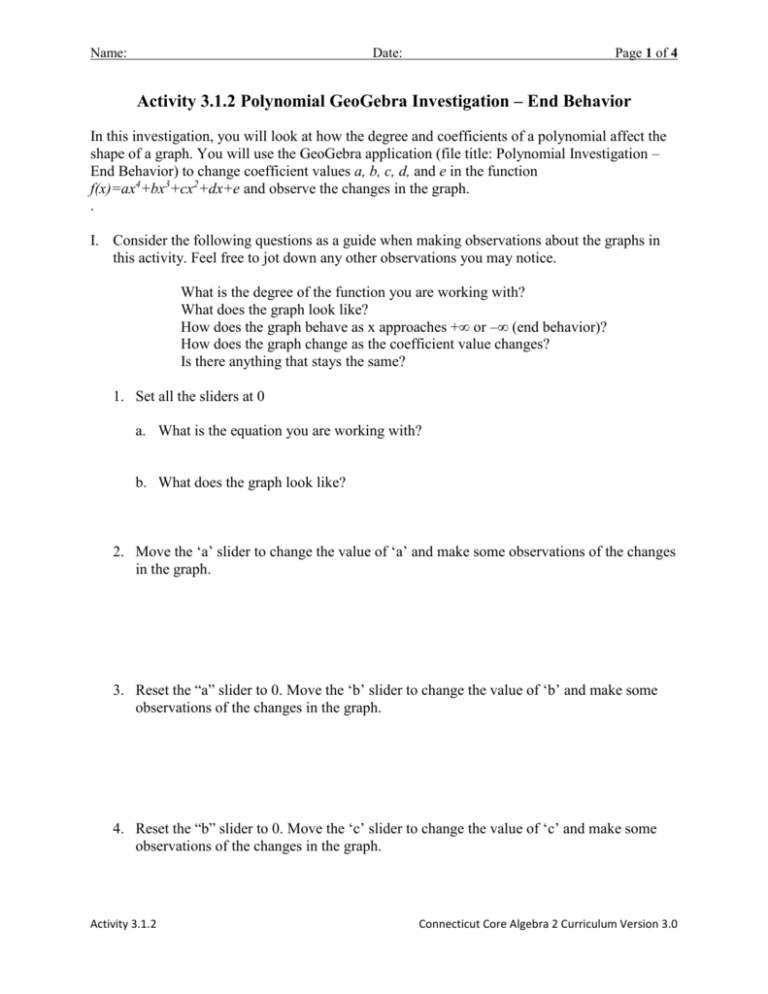
Name: Date: Page 1 of 4 Activity 3.1.2 Polynomial GeoGebra Investigation – End Behavior In this investigation, you will look at how the degree and coefficients of a polynomial affect the shape of a graph. You will use the GeoGebra application (file title: Polynomial Investigation – End Behavior) to change coefficient values a, b, c, d, and e in the function f(x)=ax4+bx3+cx2+dx+e and observe the changes in the graph. . I. Consider the following questions as a guide when making observations about the graphs in this activity. Feel free to jot down any other observations you may notice. What is the degree of the function you are working with? What does the graph look like? How does the graph behave as x approaches +∞ or –∞ (end behavior)? How does the graph change as the coefficient value changes? Is there anything that stays the same? 1. Set all the sliders at 0 a. What is the equation you are working with? b. What does the graph look like? 2. Move the ‘a’ slider to change the value of ‘a’ and make some observations of the changes in the graph. 3. Reset the “a” slider to 0. Move the ‘b’ slider to change the value of ‘b’ and make some observations of the changes in the graph. 4. Reset the “b” slider to 0. Move the ‘c’ slider to change the value of ‘c’ and make some observations of the changes in the graph. Activity 3.1.2 Connecticut Core Algebra 2 Curriculum Version 3.0 Name: Date: Page 2 of 4 5. Reset the “c” slider to 0. Move the ‘d’ slider to change the value of ‘d’ to a non-zero number and make some observations of the changes in the graph. 6. Based on your observations, make some conclusions about: a. How does the degree affect the end behavior (increasing or decreasing of both right and left sides of the graph)? b. How does the leading coefficient affect the end behavior of the graph? Activity 3.1.2 Connecticut Core Algebra 2 Curriculum Version 3.0 Name: Date: Page 3 of 4 II. Now that you have an idea as to what coefficients and degrees can do to the end behavior of a graph, let’s explore other aspects of the graph. Move any or all of the sliders and make some observations. Try to compare your observations with ones you made earlier. Consider the following questions when you are changing the coefficient values: Is the graph always increasing or always decreasing? If not, where does it change? Does the graph have any minimums or maximums? Do you notice any symmetry? How many x – intercepts does the graph have? Can the number of x – intercepts of the graph change if you keep the degree the same? 1. If the leading coefficient stays the same, and everything else changes, does the end behavior change? 2. Based on the degree of the function, what is the maximum number of x – intercepts you can have? What is the minimum? 3. Are there any other conclusions you can make based on all of your observations? Activity 3.1.2 Connecticut Core Algebra 2 Curriculum Version 3.0 Name: Date: Page 4 of 4 On the charts below, record your findings for polynomial functions with degrees 1 through 4 and with a positive leading coefficient. Degree of 1 2 3 4 Polynomial Leading + + + + Coefficient Right End Behavior (up or down) Left End Behavior (up or down) Maximum number of x – intercepts Minimum number of x – intercepts Maximum number of turns (changes from increasing to decreasing) or a negative leading coefficient. Degree of 1 Polynomial Leading – Coefficient Right End Behavior (up or down) Left End Behavior (up or down) Maximum number of x – intercepts Minimum number of x – intercepts Maximum number of turns (changes from increasing to decreasing) Activity 3.1.2 2 3 4 – – – Connecticut Core Algebra 2 Curriculum Version 3.0

